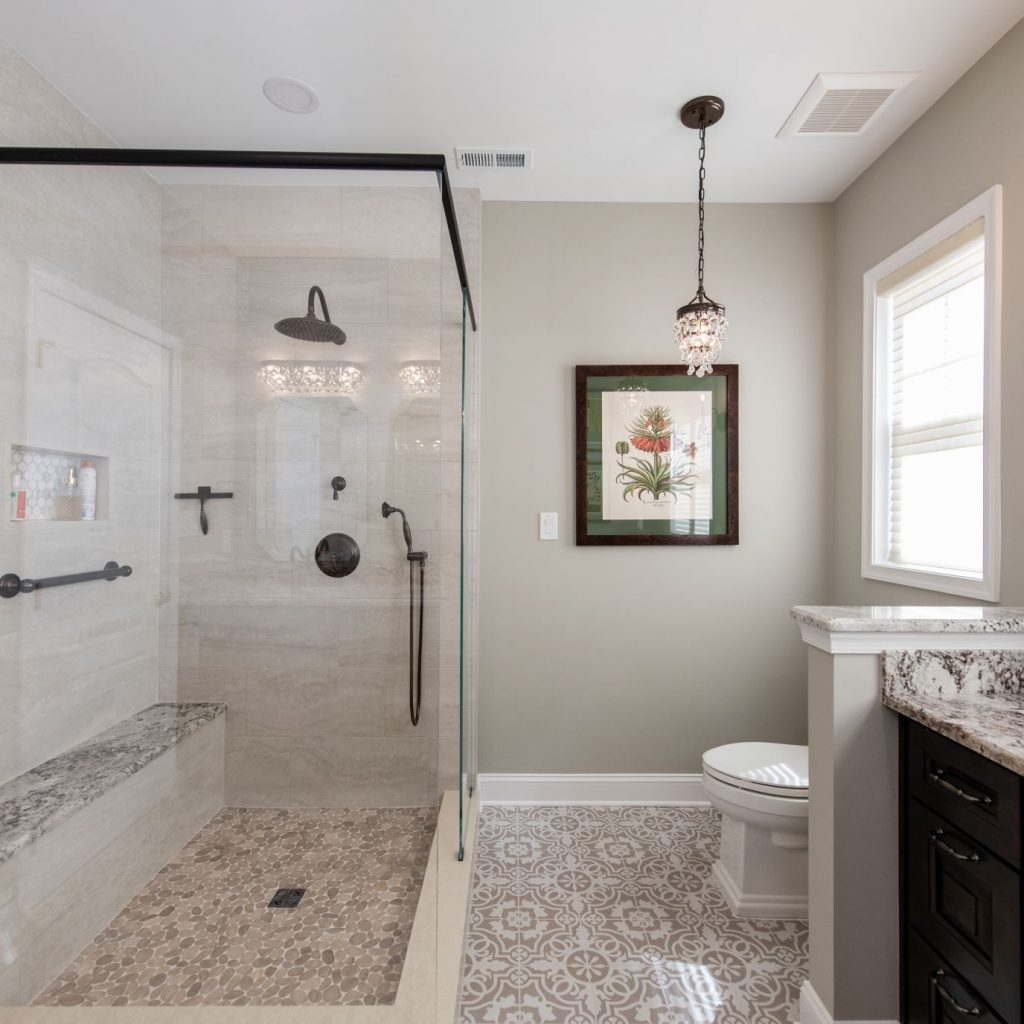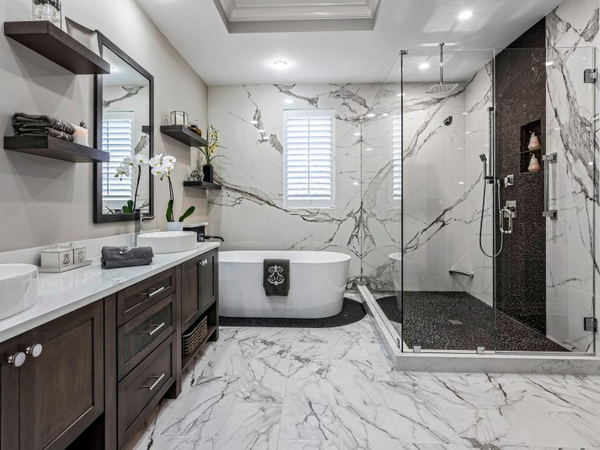Renovating your home can improve your quality of life and your home’s value. But having an idea of how much value a remodel could add to your home can make it easier to justify the expense. In the case of a bathroom renovation, the return on investment may depend on the dimensions of the arrangements. We’ll review your potential return, as well as factors to consider before going ahead and ways to pay for it all.

How much value does a bathroom remodel add?
In general, the parameters that experts use to determine the value that a renovation project adds is not a fixed dollar amount, but the percentage of the initial cost that the owner can recover when the house is sold.
Relatively small renovations can have a better return on investment compared to extensive ones. Along the same lines, adding a completely new bathroom may make the most sense for your personal situation, but the return on investment may only be modest when you decide to sell your home.
In most cases, the value added to your home will not match your investment. But certain remodels tend to be better than others, so keep that in mind when making your plans.
You’ll also want to consider how certain improvements can save you money over time, such as energy-efficient lighting and low-flow toilets and showers.
According to a 2021 Cost vs. Value report by Remodelling, the return on investment in a bathroom remodel depends on the updates you make. Please note that returns are not guaranteed and may differ from the national average depending on where you live and local market conditions.
The report includes the average cost of five different bathroom remodels.
- Mid-Range Bathroom Remodel — a 60% return on the median cost of over $24,000.
- High-End Bathroom Remodel — a 55% return on median spend of nearly $76,000.
- Universal Design Bathroom — this type of bathroom takes into account universal design principles that make the room accessible to people with disabilities. An average spend of almost $39,000 usually has a return of around 58%.
- Bathroom Addition (Mid-Range) — a 53% return on an average spend of nearly $ 57,000.
- Bathroom Addition (High End) — a 53% return on a median spend of nearly $ 104,000.
Your bathroom remodel may be very different from the average project, but these average numbers can give you a general idea of what to expect.

How to plan a project for your bathroom
Before you start renovating your bathroom, it’s important to put a plan in place to get the most out of your investment without breaking the bank.
Plan your budget and the magnitude of your bathroom renovation
Whether you’re renovating an existing bathroom or adding a new one, you’ll need to have an idea of the size of the remodeling project and how much it will cost. Decide what improvements or additions you want to make and get various estimates from contractors.
You’ll also need to consider whether your remodel will require an overhaul of your electrical or plumbing system, which can add to costs. You may need to consult an experienced electrician or plumber.
Choose your finishes: Tile, lighting, plumbing fixtures, and more
In general, if you plan to sell your home in the near future, it’s best to go for colors that are as neutral as possible. But if you’re not moving anytime soon and want to create a space that’s uniquely yours, focus on the style and quality you want.
Should you do the renovation yourself?
A major project like a bathroom remodel can be left to experienced professionals, especially if you plan to sell the house at some point and renovation is part of your sales plans.
Although hiring someone else to do the work will cost you more, the quality and peace of mind are probably worth it. Unless you have experience as a contractor or want to make only minor changes, it’s best to let the professionals do the bathroom remodeling work.
What bathroom renovations add value to a home?
Even if your plan isn’t to do a complete remodel, there are many bathroom renovations you can do to help increase the value of your home.
Change the dimensions or configuration of the bathroom
A possible alternative to enlarge your bathroom? Changing the configuration of the bathroom by replacing or relocating accessories can improve the functionality of the space or improve privacy.
Add accessibility elements
According to a 2021 report from the Joint Centre for Housing Studies at Harvard University, nearly 6 million homeowners age 55 and older completed at least 1 home renovation between 2015 and 2019 to make it more accessible to people. With limited mobility.
If you or a loved one has limited mobility or anticipates potential changes to your mobility in the near future, it may be worth adding some accessibility features to your bathroom. This can include a walk-in shower, an adjustable showerhead, shower seats, non-slip surfaces, grab bars and grips, a comfort-height toilet, and two-way glass shower doors.
Improve cosmetic characteristics
Your current bathroom fixtures may be functional, but look outdated. You may want to consider cosmetic upgrades like new tile, new sinks or faucets, a different style toilet, or new lighting.
What’s next? Pay for home renovations.
Major remodels or additions can cost tens of thousands of dollars, so it’s important to think about how you’re going to pay for the improvements. While it’s best to avoid loans if possible, you also don’t want to drain your savings account and leave nothing to fall back on in an emergency.
Depending on how much money you have in your home, you may have several options:
- Home Equity Loan
- Line of credit with mortgage guarantee
- Cash refinance
If you use these loans to buy, build, or improve your home, you can even deduct the interest you pay on your tax return. They also often offer lower interest rates than other loan options because they use your home as collateral.
Personal home improvement loans may be another option worth considering. And while it may be tempting to use a credit card, the interest can be expensive. Also, depending on the scale of your project, your credit limit may not be high enough to cover the entire cost of the project.
Regardless of how you decide to finance your project, it’s important to think about the cost of the remodel versus the potential added value of the home to make an informed decision.










Read 0 comments and reply